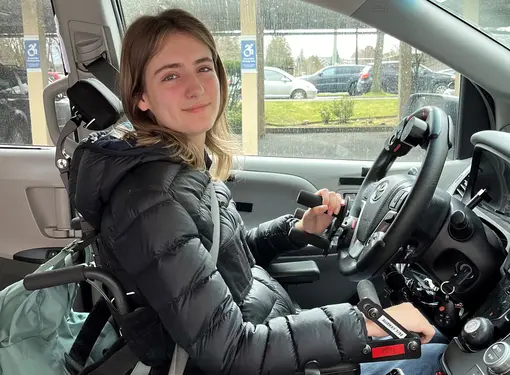How to solve a problem like accessible parking misuse
A few weeks ago, my wife, Amanda, and I went to see Star Wars at a movie theatre. When we arrived at our local theatre, all the accessible parking stalls were full and it took us a long time to find an appropriate spot.
I chalked the experience up to supply and demand: how the need for accessible parking is growing due to our aging population and whether the required number of spots was increasing to match that. Evidently the answer is “No.”
But then something happened a few weeks later that made me think of different issues, ones that occur when people aren’t aware of the barriers people with disabilities face.
Amanda and I took her mom to the same movie theatre to see The Revenant, and as we were parking in an accessible stall, we noticed a group of able-bodied teens getting out of a car parked in an accessible spot beside us. The car had a wheelchair placard, so Amanda asked them if someone in their group had a disability. (We know that often people will pick up or drop off someone with a disability, or many people have an invisible disability.)
One of them said that his mom had a disability and they were picking her up. The group quickly walked away, and later we saw them buying tickets for a movie, no mom in sight.
Do you know that to be using a placard legally, users must be loading or unloading a person with a disability? But even we often see someone with a placard sitting in the car waiting while an able-bodied relative or friend runs into the store – technically illegal. They are taking a designated spot that they don’t really need.
This raised several issues that I, and other people with disabilities, deal with on a daily basis. Of course, it’s important to have rules, laws, and accessible features in place, but how do we enforce them? When (if ever) is it safe to confront someone who is clearly breaking the rules? This gets even more complicated because we know that not all disabilities are visible.
So, how do we solve a problem like accessible parking misuse?
1. Awareness. We need to increase awareness of why people with disabilities need accessible parking. You can read more about this here.
2. Enforcement. Accessible parking should be strictly enforced strictly at large venues such as malls and movie theatres by security staff. There should also be a way to easily report abusers to security staff without having to confront them ourselves, which could be dangerous.
3. Remember, and heed, the law. Just because the vehicle you’re in has an accessible placard doesn’t mean you should use an accessible spot if you don’t have a disability.
4. Understand the diverse types of accessible needs. The growing need for different parking needs like pregnancy moms or new parent spots, and accessible spots that are wide enough to accommodate all types of chairs/assistive mobility devices.
5. Rethink the symbol. Instead of using the traditional image of a static wheelchair to represent accessible parking, maybe we need to come up with a more modern and broad take on what it means to have an accessibility need.
Do you have more ideas on how we can solve the problem of accessible parking? Tell us about your experiences in your community or share solutions in the comments!







